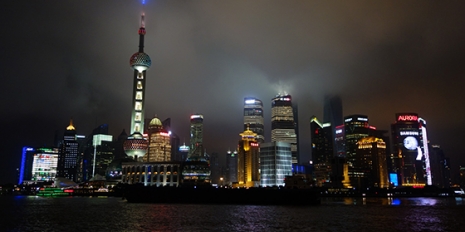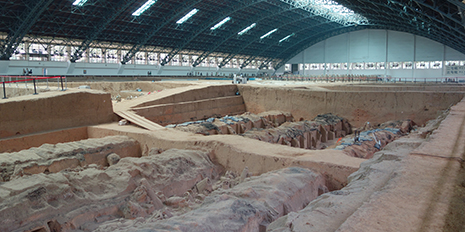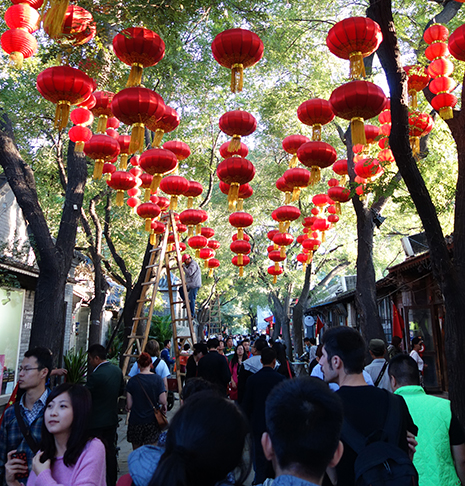
If I took one theme away from China it would be scale: the vast landmass, the thirst for construction, the booming economy. Look at China today and realise this is a nation where 30 million people died from starvation during the conversion to a Communist State between 1958 and 1961 (and unofficial estimates up to 45 million). In the last 30 years, the cities have exploded with rapid urbanisation as almost half a billion Chinese have migrated from the countryside. The burgeoning economy has grown an affluent middle class, evidenced by a booming domestic tourist trade, and now China faces the next big challenge of meeting the needs of the established rural populous.
A recent trip to Shanghai, Beijing, and Xi’an was just a drop in the ocean but revealed ethnographic insights that highlight just how important immersive research is before developing products for the not-so-emerging market.
Maybe it’s systemic of a one-party state but the culture is very tolerant of external factors like noise, pollution, and the effect of mass population density – they’ve had to adjust quickly. The ability to adapt is essential for innovation uptake and China is positioning itself as the perfect test bed for new products. Is China the new wave of early tech adopters on a mass scale?
There is enormous smart phone penetration – estimated 240 million phones shipped in 2013. Apple, Samsung, and a plethora of Chinese brands are connecting the vast population via proprietary social media platforms. Apple has a surprisingly massive presence in the big centres and most were flaunting iOS7 in the week following its launch. 5s’ were flying out the Apple store in Xi’an. The relatively high price tags don’t seem to be putting off the consumers, although this may all be set to change with the rise of the mid-range Xiaomi phones.
Forget Facebook - it’s banned (apart from within Shanghai’s new freetrade zone but that doesn’t mean China’s isn’t social. The Chinese social media platform WeChat boasts 300M domestic users. Twitter is replaced by Sina Weibo (look out for Blythe’s upcoming blog on the recent BBD CEO Summit) and Google is clearly copied by Baidu. China is very social. Censorship is ripe (a red carded keyword search will quickly lead to a tapped internet connection) but the informal flow of content through social networks is challenging the status quo.

Maybe it’s a symptom of the rampant efficiency of Chinese construction but there is a distinct lack of sensitivity towards customer experience. Arguably China’s most significant and impressive historical asset, the Terracotta Army, is showcased in a pre-fabricated aircraft hangar – not entirely representative of the elaborate underground tomb that housed the 8000-strong clay army. Where’s the experience design? The art is often lost in the growth.
The Maglev train from Shanghai Airport is the fastest public transport system on the surface of the Earth, delivered with a particularly average experience. The Beijing subway, which was largely built for the 2008 Olympics, feels like it was built without the thought of the millions of people who use it annually. It could have been the best subway ever built.
Experience could well be the next frontier for Chinese design and particularly important as the tourism industry grows.
I was visiting a friend in Shanghai who works for the Chinese arm of a UK design firm. A fascinating conversation about the differences when ‘designing for China’ revealed two great insights that highlight just how cultural design is:
Our perception that small and dense products equal value doesn’t necessarily translate. The chosen concepts in a Chinese design review are often the large and bulky ones. Forget discreet heat pumps, think man-sized AC units for China. The majority of Chinese tourists prefer to Sherpa bulky DSLRs along the Great Wall rather than equally impressive compact cameras.
Chrome, streamlined objects are synonymous with the late Art Deco US design trend. In today’s terms that’s retro or even vintage. It turns out that reference is entirely cultural and only relevant to the West. Generational styles are different in China and what we see as retro can easily be contemporary.
Leave the preconceptions at the border and assume nothing with China. The only way to know is to experience.

Comments
Post new comment